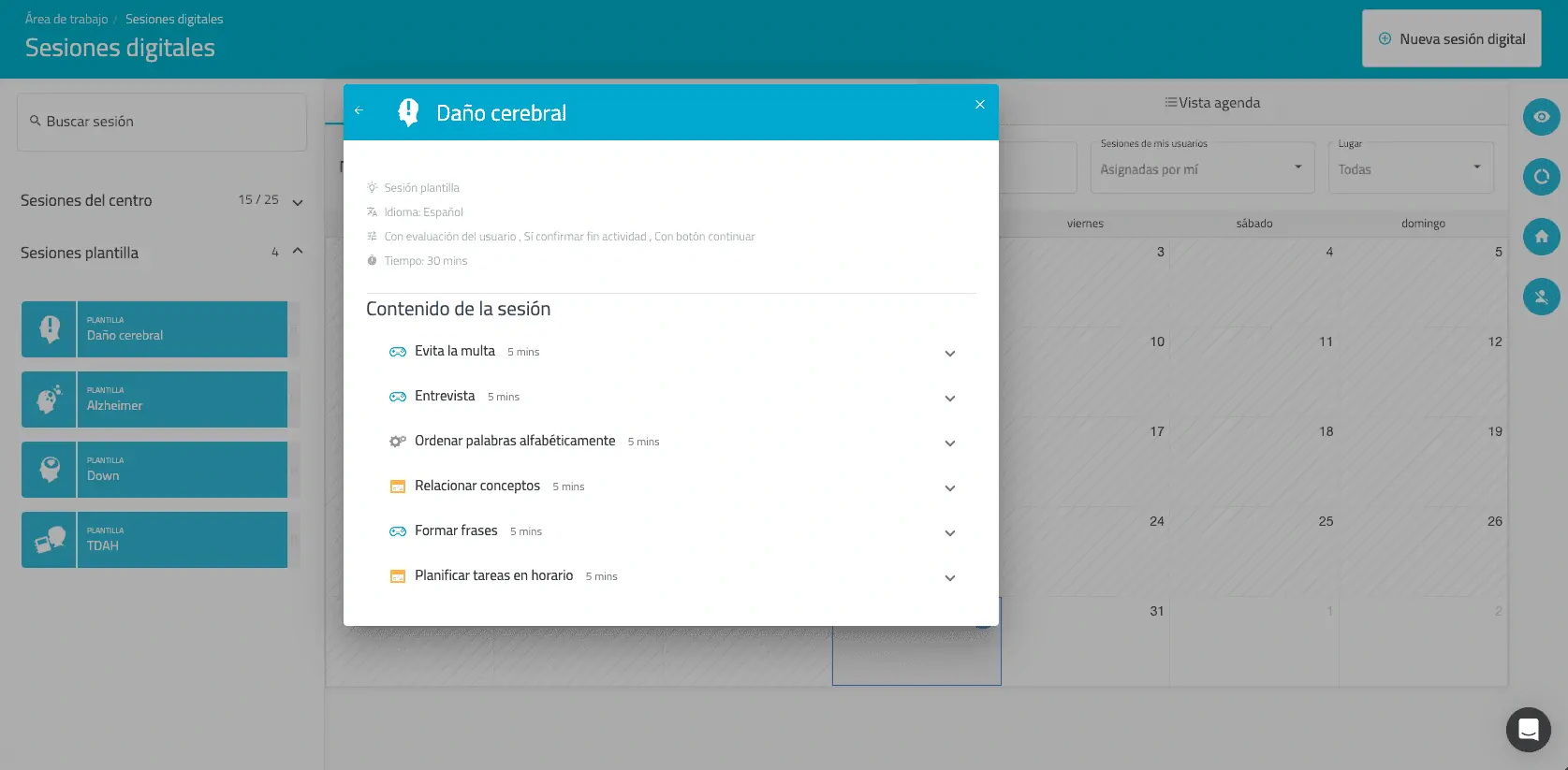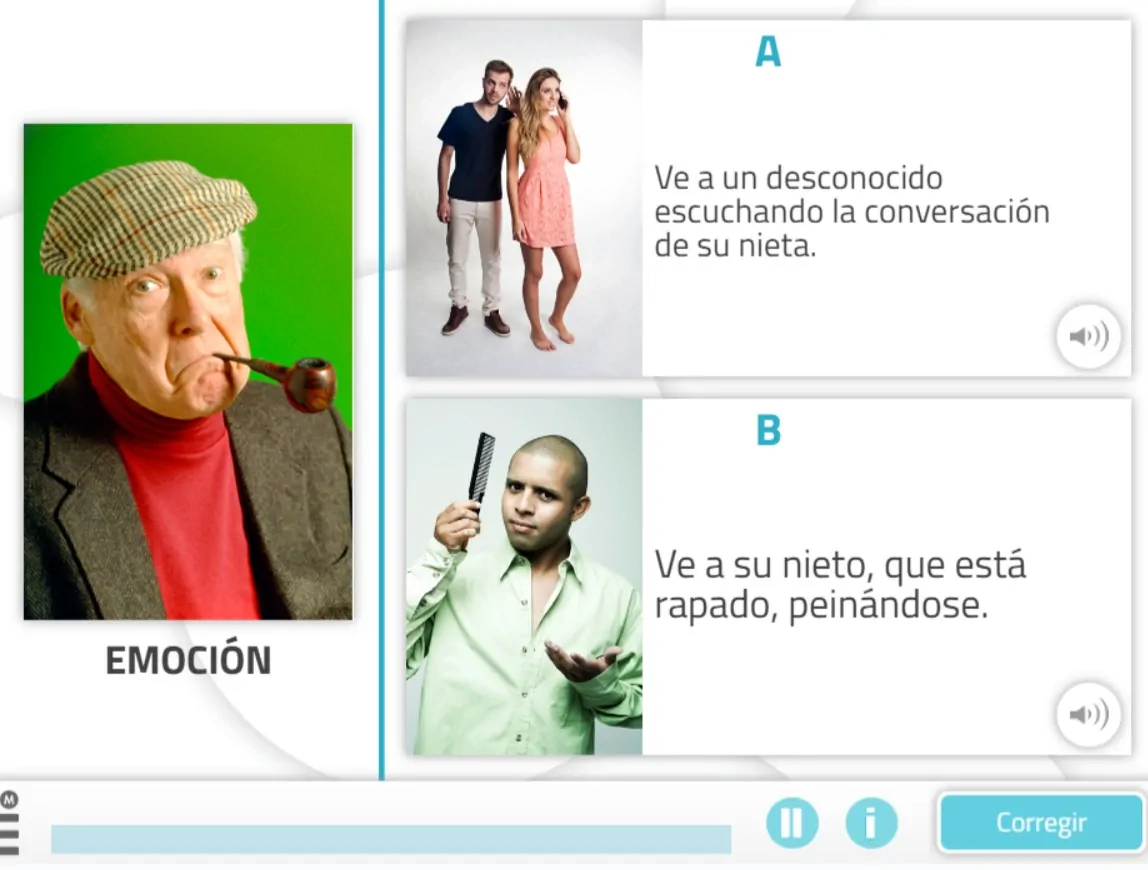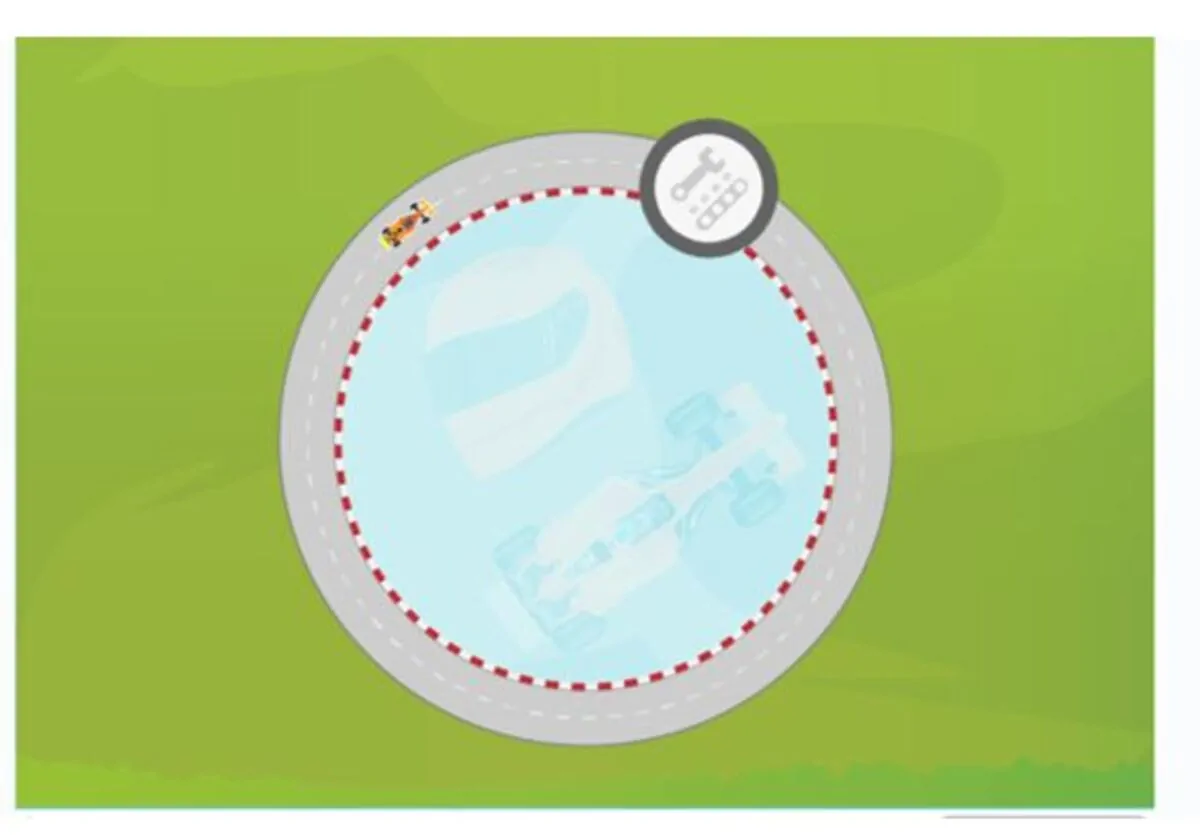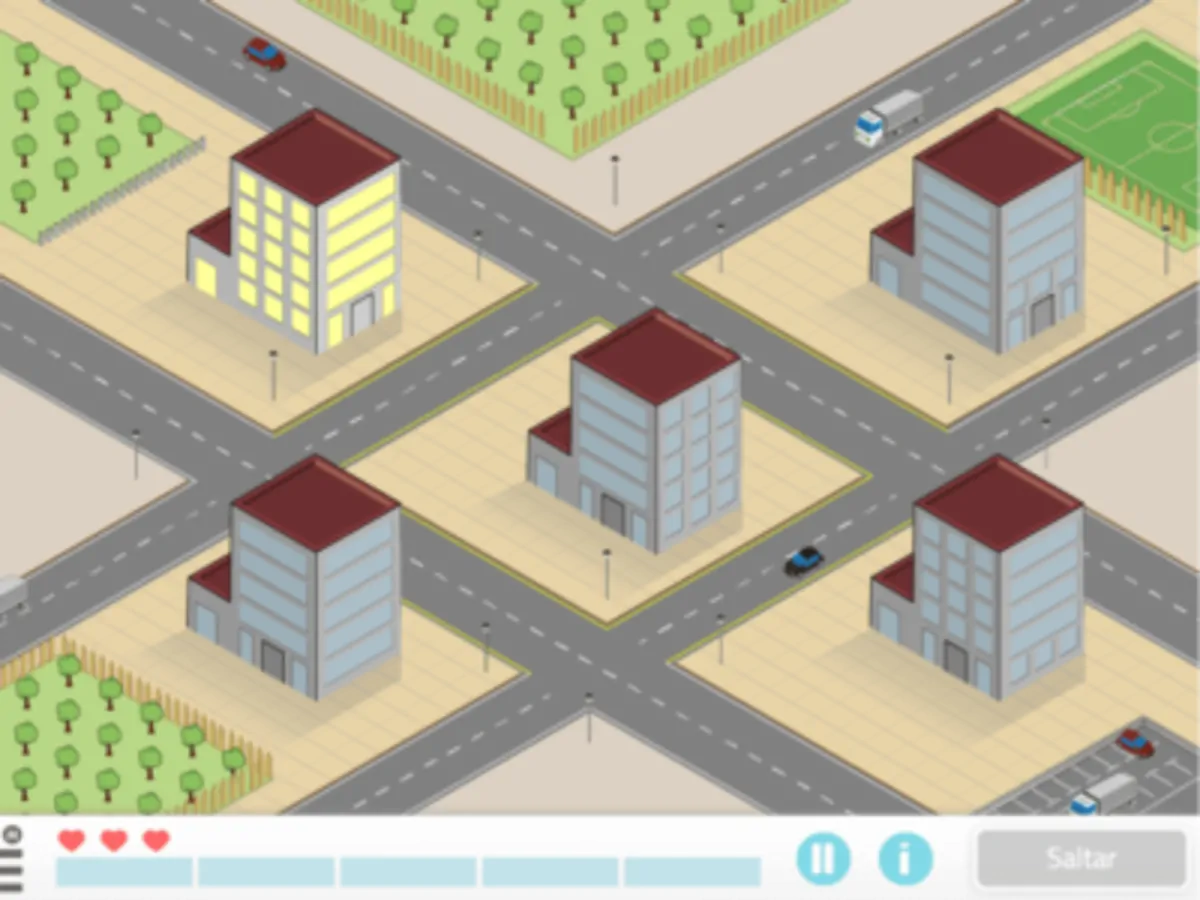Laura Videla, neuropsychologist, answers the remaining questions about her lecture on the neuropsychological assessment of the cognitive impairment in people with Down syndrome.
The lecture took place last March in #YoMeQuedoEnCasa learning with #NeuronUPAcademy.
Questions about the lecture: Neuropsychological assessment of cognitive impairment in people with Down syndrome
1. The master’s candidate in neuropsychology, Ibeth Sosa, raises her question about the lecture on people with Down syndrome:
Question:
Good morning, from Latin America, Colombia. I am a candidate for a master’s degree in clinical neuropsychology. I am currently carrying out my research work specifically with older adults with arterial hypertension. First of all, we want to know the neuropsychological profile of these patients in terms of their cognitive functioning. In addition, we seek to see if, or to what extent, hypertension influences and whether it can produce or affect a mild cognitive impairment. What recommendations would you give me for this research work?
Thank you very much.
Answer:
Hello, Ibeth, nice to meet you. I am very sorry I cannot help you; unfortunately the topic of your thesis is outside my field of knowledge. My recommendation is more methodological. I advise you that before you start working on the topic you conduct a very good literature search. Also, try to keep up to date with everything published regarding hypertension and cognition. In conclusion, this will help you with several things. First, it will help you define your objectives and hypotheses and also to know which are the future lines to work on. It will also help you define your neuropsychological assessment protocol because you will see which tests are most useful and have shown greater sensitivity in this type of patient.
I hope this is useful to you. Regards and good luck!
Laura.
2. Clara Trompeta, neuropsychologist, asks about the pharmacological treatment of the last case presented in the lecture:
Question:
First, congratulations to Laura. I think you presented it very clearly and I found it very interesting. I am a neuropsychologist working in research with cognitive impairment and parkinsonism. My question refers to the last case you presented. Although it has more to do with pharmacological treatment than with neuropsychology, I would like to know, why was it decided to give the patient a neuroleptic to improve that picture more related to prefrontal problems once memory problems had been ruled out?
Thanks and congratulations again.
Answer:
Thank you very much for your comment, Clara. I am glad you found the lecture on people with Down syndrome interesting. What I wanted to convey with the last case was that not all cognitive impairment in patients with Down syndrome is due to Alzheimer’s disease. It is more about the importance of making a good diagnosis and that neuropsychology can help us in this process. That said, the case I presented has a long history of behavioral disturbance (with aggression, challenging behaviors, etc.), but I did not present all the information so as not to be too long. Likewise, this patient is also being followed by psychiatry and many different treatment strategies have been tried.
Quetiapine is a drug that has been shown to improve behavioral disturbances in patients with dementia. Also, we have seen that people with Down syndrome (with and without dementia) also respond well to this drug. Certainly, all antipsychotic drugs have antidopaminergic effects. For this reason, a common side effect can be parkinsonism. However, quetiapine causes the least parkinsonism, and because of that and its good profile, it is the one we usually use most in these cases for managing behavioral disturbance.
I hope this answers your question. Regards
Laura.
3. Nuria Reyes Alonso, poses her questions about the lecture on people with Down syndrome:
Question:
Which tests do you give when the adult has not had stimulation throughout their life, and does not have reading or writing, and their level of comprehension is very low?
The CAMDEX test is only for mild and moderate intellectual disability. Thank you.
Answer:
Hello Nuria, unfortunately the outlook for assessing the cognition of patients with more severe intellectual disabilities is complicated. I personally always try to administer the CAMDEX and even the CRT. However, sometimes they are useless. Still, other times you are surprised by the abilities of these patients even if they do not have very extensive language.
On the one hand, the scores you obtain will be low. Even so, they can be helpful if you do longitudinal follow-up. Another alternative is to use simple tests and subtests from batteries that you think can be adapted to that patient’s level. For example: the praxis items from the CAMCOG, some subtests from the Barcelona Test, child tests or Haxby’s command comprehension. Of course, this will not help you at the research level but it will clinically. In addition, there is also the SIB – Severe Impairment Batery – (Saxton et al., 1993). This test serves for severe intellectual disabilities with 40 items and takes about 20 minutes to administer.
On the other hand, more than the usefulness of the neuropsychological tests, I recommend that you take a very good history with a caregiver close to the patient. That is to say, someone who knows them very well and preferably for a long time. This way, you will be able to obtain a great deal of information and you will be able to properly assess all the changes. In this case, you can also use the Press Conference CAMDEX-DS and the DMR scale.
I also know that TEA was pending validation of a computerized test for severe intellectual disabilities called ECDI-SE, but I do not know at what stage this project is.
I hope the information is useful to you. Regards
Laura.
4. Alicia Márquez asks about a clinical case in the lecture on people with Down syndrome:
Question:
Good afternoon Laura. First of all, thank you very much and congratulations on your lecture. I would like to ask you, why in clinical case number two was quetiapine prescribed to the person, given that it is an antipsychotic and there was no sign indicating possible psychosis?
Thanks in advance.
Answer:
Thank you very much for your comment Alicia, I am glad you found the lecture on people with Down syndrome interesting.
What I wanted to convey with the last case was that not all cognitive impairment in patients with Down syndrome is due to Alzheimer’s disease. Making a good diagnosis is more important. In addition, neuropsychology can help us in this process. That said, the case I presented has a long history of behavioral disturbance (with aggression, challenging behaviors, etc.), but I did not give you all the information so as not to be too extensive. Likewise, this patient is followed by psychiatry and many different treatment strategies have been tried. Certainly, quetiapine is a drug that has been shown to improve behavioral disturbances in patients with dementia and, in general from our experience, we have seen that people with Down syndrome (with and without dementia) also respond well to this drug.
I hope this answers your question. Regards
Laura.
5. Valeria Patti Gelabert presents her questions regarding the re-evaluation of patients with Down syndrome:
Question:
Excellent talk, thank you very much! I have a question about re-evaluation. How often is it applied to the patient?
Answer:
Hello, Valeria! Thank you for your comment.
The health plan we have developed recommends annual follow-up as long as the person is healthy. However, when a patient is diagnosed with dementia the follow-up is adapted according to each case. The general recommendation is not to repeat a neuropsychological assessment unless a minimum of 6 months have passed. This means that if the patient requires more follow-up we do visits only with neurology and reserve the neuropsychological assessment for 6 and/or 12 months.
Question:
What are the scores to determine a dementia-like decline on the CAMCOG-DS test?
Answer:
The problem with this population is that there are no cutoff points as in the general population. There are also no rigorous studies that determine what drop in the test is truly significant. For this reason, there is a need to perform longitudinal assessments and compare each person with their baseline performance. To be able to do this, it is essential that the patient’s baseline assessment is at a time in their life when there is no suspicion of dementia or cognitive impairment due to other causes.
Right now we have a manuscript under review pending publication. The work relates to cutoff points for the CAMCOG and the CRT that may be useful to you. We are also analyzing the data to determine when a drop in test scores is significant or not. We hope they will be available soon.
Question:
Do you work between evaluations with cognitive stimulation? Can the assessment and re-assessment have a learning effect?
Answer:
The structure of the unit does not allow us to carry out cognitive stimulation interventions as part of our care work. But we always recommend that people stay active (physically and cognitively). That way, when we detect a low level of stimulation we activate the social work pathway to offer resources to that person.
Question:
Can the assessment and re-assessment have a learning effect?
Answer:
There is also nothing published in that sense that demonstrates a learning effect in this population. Although, I believe there can be, especially in the milder cases. The CRT has 3 versions to alternate the stimulus sheets for learning and it is a good option to avoid these types of effects.
I hope the information is useful to you. I found your questions very interesting. Regards
Laura.
6. Lucía Elices García poses her questions about the lecture on people with Down syndrome:
Question:
When you begin to observe cognitive and behavioral changes in people with Down syndrome that raise suspicion of possible dementia and that you finally corroborate the diagnosis with a neuropsychological assessment and subsequent neuroimaging techniques, does the intervention process with that person change from then on?
And on the other hand, do you usually also start some pharmacological treatment specific for dementias?
Thank you.
Answer:
Hello, Lucía, thank you for your question. As you know, unfortunately Alzheimer’s disease has no cure. Currently, the treatments given are to slow the course of the disease and for the comorbid symptomatology that may appear. When dementia is diagnosed in a person with Down syndrome the same treatment as in the general population is given with AChEIs (acetylcholinesterase inhibitors). In addition, throughout the disease drugs can be added to address specific symptoms such as sleep disturbances or other behavioral disturbances.
In these cases medical follow-up is usually every six months or even every 3 months depending on the need of each person. Caution must be taken with certain drugs such as memantine, since it is known to lower the epileptic threshold and this population has a high risk of developing seizures related to dementia. I leave you the reference of a study published in 2018 on the treatment of dementia with AChEIs in DS in the references section.
In addition to this, from the unit we always offer an orientation visit to families who have just received the news. These visits are carried out by a neuropsychologist and a social worker who provide information both about the disease and about available resources. Families are also offered participation in family groups who are in the same situation and where they can share experiences and feelings.
Question:
Do you start a new intervention program with that person or, for example, do you increase the number of cognitive stimulation sessions?
Answer:
The structure of the unit does not allow us to carry out cognitive stimulation interventions as part of our care work. But we always recommend that people stay active (physically and cognitively). That way, when we detect a low level of stimulation we activate the social work pathway to offer resources to that person.
My recommendation is to adapt the level of cognitive demands as the disease progresses. This way, frustration is avoided and the preserved abilities are maximized. In addition, we try to make the intervention as ecological as possible.
I hope the information is useful to you.
Laura.
7. Eva María Cubero raises the following questions about the lecture:
Question:
Do the neurobiological aspects you mentioned occur in all people with Down syndrome, regardless of whether it is due to trisomy, translocation or mosaicism?
Answer:
The neurobiological alterations occur in all people with Down syndrome since the syndrome is the same for the three causes. However, what can happen is that they are more or less severe. In general, mosaics are less affected.
Question:
Which tests are used to assess the degree of disability in Down syndrome? Are any of the tests you mentioned for the neuropsychological evaluation freely available?
Answer:
We use the K-BIT because it is a relatively quick test. Also because it is the one other groups are using at the European level. The main problem with this test is that the Spanish version is very language-loaded and this is precisely one of the cognitive domains most affected in Down syndrome, so it penalizes them. However, since it also includes the matrices part you can better orient yourself with that score. Depending on the time you have to see each patient and their level you could use other tests; I list some that are recommended in various manuals:
- Peabody Picture Vocabulary Test (PPVT-III).
- Spanish clinical evaluation of language fundamentals (CELF Preschool 2).
- Clinical Evaluation of Language Fundamentals (CELF-4 Spanish).
- Illinois Test of Psycholinguistic Abilities (ITPA).
- Kaufman Assessment Battery for Children (K-ABC).
- Kaufman Brief Intelligence Test (K-BIT).
- Leiter International Performance Scale – Revised (LEITER-3).
- Test of Nonverbal Intelligence-2 (TONI-2).
- Wechsler Nonverbal Scale of Ability (WNV).
- Matrices. General intelligence test.
You might also find some versions of the tests on the Internet, but the CAMDEX for example is from TEA.
Question:
In Madrid, is there any Alzheimer-Down center/unit that works like you?
Answer:
As far as I know, we are the only unit with this type of protocols; however I know there are people in Madrid working in this field, you can consult for example the Down Madrid page.
I hope the information is useful to you. Regards!
Laura.
8. Olga Gelonch Rosinach raises her questions about the lecture on people with Down syndrome:
Question:
Hello, congratulations on the fantastic initiative of #YoMeQuedoEnCasa learning with #NeuronUPAcademy. Laura Videla’s lecture on people with Down syndrome has been fantastic. I would like to ask if you could provide the reference for the Cued Recall Test for people with intellectual disability. To know whether there is a Spanish validation/standardization of this test, and also to ask about the Modified Cued Recall Test. Does your unit use this modified test? What differences are there?
Thank you very much.
Answer:
Hello Olga, thank you very much for your comment!
The Buschke Cued Recall Test (1984) is the one used in the general population and consists of 16 written stimuli. The version modified for intellectual disability has 12 visual stimuli. In this way we can assess memory without requiring literacy. Also, the test dynamics are practically the same: the semantic cue is given and the 3 trials are done, first free recall and then cued recall.
The test is not validated or standardized in the Spanish population. We do not have any test for intellectual disability, hence the importance of longitudinal assessments. But it is widely used and I find it very useful; I definitely recommend using it to assess cognitive impairment in this population. If you are interested, right now we have a manuscript under review with tentative cutoff points for this test; we hope it will be published soon and be useful to everyone for clinical practice.
Finally, I leave you some references about Devenny’s mCRT in the references section. This author has worked a lot on the topic. I also leave you an article by my colleague Bessy Benejam (2015).
I hope the information is useful to you. Regards.
Laura.
9. Sandra Peña Díaz asks about the protocol applied to people with absence or communication difficulties:
Question:
Good afternoon. First of all, thank you very much for this webinar which has been very interesting. In the case of cognitive assessment of people with Down syndrome, what protocol do you apply to people who have absence or difficulties in communication? For example, in cases of selective mutism and in cases of very severe intellectual disability in people with Down syndrome and autism.
Thank you very much
Answer:
Hello, Sandra
Unfortunately the outlook for assessing the cognition of patients with more severe intellectual disabilities is complicated. I personally always try to administer the CAMDEX and even the CRT. Sometimes they are of no use, but other times you are surprised by the communicative abilities of these patients even if they do not have very extensive language. If you manage to administer them, the scores you obtain will be low, but they can still be helpful if you do longitudinal follow-up.
Another alternative is to use simple tests and subtests from batteries that you think can be adapted to that patient’s level. For example: the praxis items from the CAMCOG, some subtests from the Barcelona Test, child tests or Haxby’s command comprehension.
On the other hand, in these cases, more than the usefulness of the neuropsychological tests, I recommend that you take a very good history with a caregiver close to the patient.
I hope the information is useful to you. Regards!
Laura.
10. María García Alaman thanks for the lecture on people with Down syndrome and raises her questions:
Question:
Thank you for offering us these very interesting informative pills and making them so accessible to everyone. I have several questions for Laura Videla. In your EA and Down syndrome unit, could you assess people from outside your community? Is it open to people from other regions?
Answer:
Hello María, thank you for your comment.
The health plan covered by the Generalitat is only for people with Down syndrome over 18 years old in Catalonia. However, we can assess people from outside. In fact, there are already users from other regions who come for follow-up and even some from South America, only those visits are not covered by the Generalitat. You can contact us at the Alzheimer-Down Unit phone (93.553.79.41) and we will give you more information if you need it.
Question:
Do you recommend any website or bibliography on this topic? Do you know of any conference or meeting on this issue that will be held soon or that has been held and whose information can be downloaded?
Answer:
As for the bibliography, luckily there is more and more information on the subject. At an international research level I recommend you visit the T21RS website. It is a non-profit scientific organization made up of researchers in the field. They organize a congress every two years and just last year we held it in Barcelona. The next one is in 2021 in California.
In Spain, a person who has a lot of freely accessible information online is Dr. Flórez of DownCantabria. He is a great expert and gives very clear and rigorous explanations on a wide variety of topics. If what you need is something more medical/clinical specific for dementia in Down syndrome you can download the “Official Clinical Practice Guideline on Dementias” of the Spanish Neurology Society from 2018. This includes a specific chapter on intellectual disability. Apart from this, it is always useful to browse PubMed; you will see that there is growing interest in the topic and that many scientific articles have been published around the world in recent years.
I hope the information is useful to you. Regards!
Laura.
11. Betina Martínez, psychologist from the Down Vigo organization, raises her questions about the lecture on people with Down syndrome:
Question:
In our Association and coordinated with Down Galicia we apply a protocol for the early detection of aging in people with Down syndrome. In the protocol, we begin the longitudinal study from age 20. We apply the CAMDEX DS, CRT and an internal test originally devised for those people to whom neither of the two previous tests could be applied.
Regarding the CAMDEX DS, we always have some controversy about when to consider a decrease in the total score significant. You mentioned in the webinar that around 2 – 3 points should be considered a data point to take into account. Does this depend on other factors, such as IQ? With a decrease of 2 – 3 points is it considered that we should reapply the test at 6 months in all cases?
Answer:
Regarding the 2-3 point drop on the CAMCOG, I think there has been some misunderstanding since such a small variation on the test can hardly be considered significant; in fact, CAMCOG scores often fluctuate slightly over time and tend to be less stable than CRT scores. I personally would not repeat an assessment for a 2-3 point decrease on the CAMCOG if there is nothing else about the case that draws my attention. The problem we have with these tests in the world of intellectual disability is that there are no norms or cutoff points, hence the need to perform longitudinal assessments. If you are interested, right now we have a manuscript under review with tentative cutoff points for these two tests; we hope it will be published soon and be useful to everyone for clinical practice.
Question:
Is there a protocol on when to refer in the longitudinal study when deterioration is clearly seen?
Answer:
Unfortunately there are no specific protocols for these people when cognitive changes are detected. Delays in tests usually depend on each hospital and the healthcare professionals. At the start of our project we had the same problem as you: diagnosis and treatment were delayed a lot and sometimes were not carried out because the doctor treating the patient did not consider it appropriate to perform diagnostic tests.
We have been able to solve this through collaboration with the Hospital de Sant Pau and because within the team we have neurologists and nursing staff who can expedite some steps, but I think you are doing a good job. The only thing I can think of is that if in any case you consider that there is a very clear deterioration at the baseline visit you start all the procedures even if you do not have a longitudinal assessment at 6 months. This is where our clinical judgment comes into play, which is as important as or more important than the test results; in that case you would have to justify it very well in the report.
Question:
How often should the family or caregiver Press Conference be administered? At Down Vigo, we administer it at the start of the longitudinal study and it is repeated in case of suspected deterioration or significant changes. This means that several years could pass between one Press Conference and another. But we understand that by comparing both Press Conferences changes can be observed in a very notable way.
Is there any protocol regarding the frequency of administration?
Answer:
In general, in memory clinic visits for the general population a companion is always included in the visit. But as I mentioned, there are no official protocols for this pathology in the population with Down syndrome. We always conduct a Press Conference with caregivers at all visits since they often provide very relevant information. It is also true that the structure of visits is very variable in each center. My advice is that if you cannot conduct a complete routine anamnesis at each visit include some quantitative Number Lines that family members can answer in a self-administered way.
Question:
Regarding the CRT, you mentioned that the cue for cued recall was given at the beginning of the test when they memorized the figures. In our case, we were not doing it that way, but rather we provided the cue throughout the test and only for those words that had not been recalled in free recall.
Is there any manual or protocol? And when we administer it for the first time, what would be the reference score to consider? And for subsequent times, when is a change considered significant?
Answer:
The administration of the CRT is exactly the same as any other cued memory test. In the learning phase you must give the semantic cue to the patient so that they can generate the association between the word and the category. Later, when all the stimuli have been learned you move to the test phase and perform the first trial: they first recall the words freely and without help. Then, the semantic cue is given for those words they did not remember. This process is repeated in the two subsequent trials.
As I mentioned in the first question, as with the CAMCOG, there are no cutoff points or norms. In the references section you have the reference of an article by Devenny that may be of interest to you.
Question:
Finally, we do not administer the dogs and cats test to assess executive functions. But since it is visual, quick and simple, I would like to know the same thing. Is there any reference score to start from? When are changes considered significant?
Answer:
As I mentioned, there are no norms for the population with intellectual disability, so the dogs and cats test does not have them either.
I hope the information is useful to you. Regards!
Laura.
References
- Benejam B, Fortea J, Molina-López R, Videla S (2015). Patterns of Performance on the Modified Cued Recall Test in Spanish Adults With Down Syndrome With and Without Dementia. Am J Intellect Dev Disabil. 2015 Nov;120(6):481-9. doi: 10.1352/1944-7558-120.6.481.
- Devenny, D. A., Zimmerli, E. J., Kittler, P., &Krinsky-McHale, S. J. (2002). Cued recall in early-stage dementia in adults with Down’s syndrome. Journal of Intellectual Disability Research, 46(6), 472–483. http://dx.doi.org/10.1046/j.1365-2788.2002.00417.x
- Devenny, D. A., & Krinsky-McHale, S. J. (2009).The Cued Recall Test: Detection of memory impairment. In V. Prasher (Ed.), Neuropsychological assessments of dementia in Down syndrome and intellectual disabilities (pp. 143-161). London, UK: Springer-Verlag. http://dx.doi.org/10.1007/978-1-84800-249-4_9
- Eady, N., Sheehan, R., Rantell, K., Sinai, A., Bernal, J., Bohnen, I., . . . Strydom, A. (2018). Impact of cholinesterase inhibitors or memantine on survival in adults with Down syndrome and dementia: Clinical cohort study. The British Journal of Psychiatry, 212(3), 155-160. doi:10.1192/bjp.2017.21
If you liked this post answering questions from the lecture on the neuropsychological assessment of cognitive impairment in people with Down syndrome, you will probably be interested in the following articles:
“This article has been translated. Link to the original article in Spanish:”
Ponencia sobre personas con síndrome de Down – Respondiendo dudas





 8 activities to rehabilitate visuo-spatial skills
8 activities to rehabilitate visuo-spatial skills
Leave a Reply